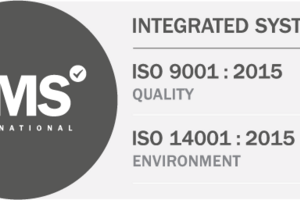31 October 2013
Energy efficient lighting specialist raises the importance of good light quality
In this regular blog series, Bob Hall, the co-founder of Greenlite Lighting Solutions, makes sure you aren’t left in the dark about the lighting sector. This month, he says: ideal retail lighting simulates daylight, but this is where LED solutions can lose their power.
As a commercial lighting expert, I know that retailers want light – not lighting. Lamps that produce a natural-looking glow are the best way to highlight your merchandise and create a welcoming atmosphere. For this reason, I urge you to quiz your lighting supplier about the colour temperature and the colour rendering index (CRI) of their LEDs.
Colour temperature measures whether the light from a lamp looks ‘warm’ or ‘cool’. Look for a colour temperature of 3000-4000 Kelvin, which will create a colour somewhere between warm and natural. Understand what ambience you want to create and don’t be fobbed off with a colour temperature which is too cool – you don’t want to leave your customers cold!
Glare control is also vital. But remember that the important point is how your products are illuminated and not necessarily how bright they are – I’ve been shown lighting products so bright that I fear permanent retinal damage, but for some reason the LED suppliers insist on shining their LEDs directly into my eyes to show how bright they are!
Also crucial to consider is the Colour Rendering Index (CRI). This is a measure of how accurately a light source reproduces colours. The CRI is made up of an average of all the colours in the light spectrum, so for example if the red is superb and the blue is awful, you will have lot of luck selling bread – not so much if you want to sell fish. But the average could still work out to be a CRI of 80 or even more – stress test the supplier, drill down and ask how the CRI is made up. In retail lighting, you don’t want unhappy customers returning goods that look different when they get home!
A big problem for retailers seeking commercial low energy lighting and good light quality is that the information available can be very misleading. LEDs, as yet, haven’t been able to achieve the same natural glow as old-style incandescent or halogen lamps. In their raw state, the LED chips are a very cold colour temperature, so a yellow phosphor filter is added to create the warmer colour temperatures. This, however, means that to achieve the same lumen output for all colour temperatures, the LEDs need to be driven harder the warmer the colour temperature, so the power consumption will increase. Or, if the power consumption is to stay the same, the lumen output will decrease, depending on how warm you want the colour temperature.
So don’t just take a shot in the dark – if you are keen to go ahead with LEDs, look at the CRI and colour temperature as well as the energy efficiency stats. While we know that energy efficient lighting is important, we also understand that you may be looking to achieve something very specific with your lighting. This may mean that LEDs aren’t your best choice, so don’t pull the plug on other technologies just because they aren’t the latest leading light! A good lighting supplier will help you find the right products for you.


